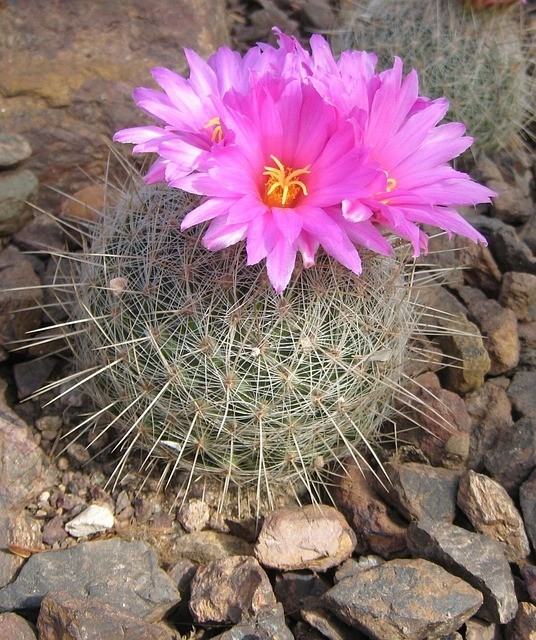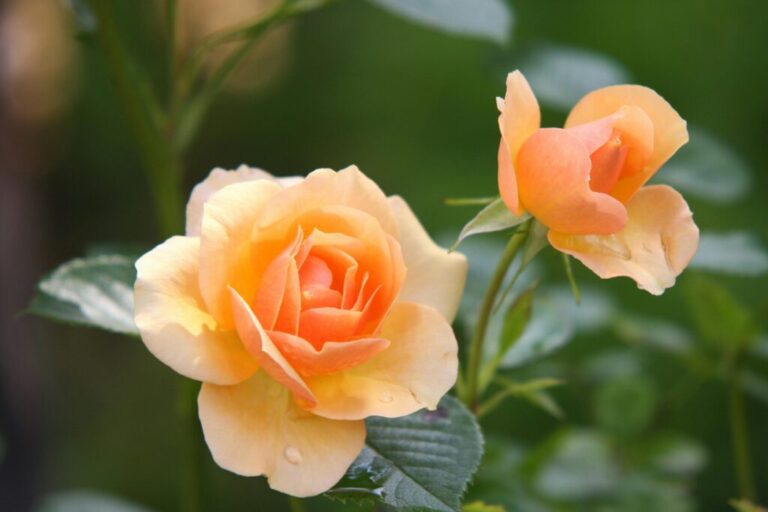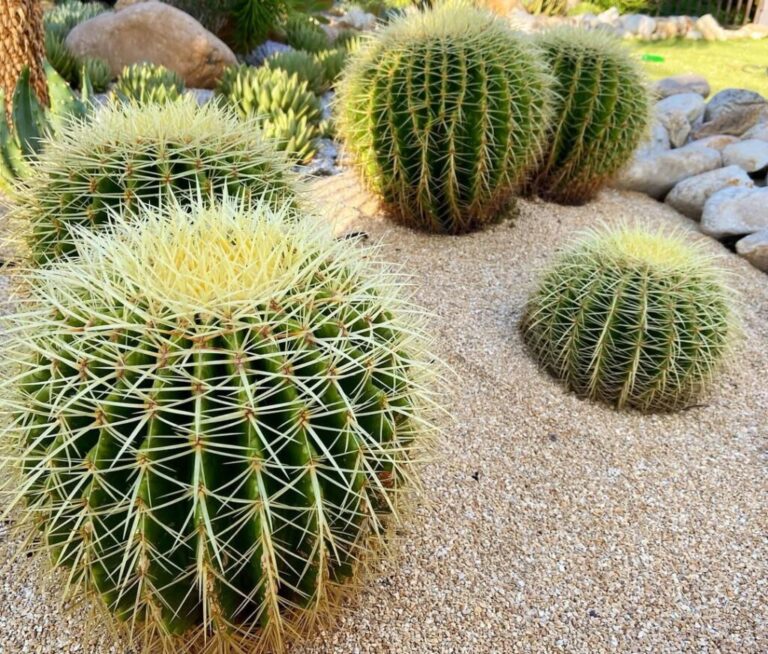- 1 Are You Sure? These 10 Mammillaria Cactus Care Mistakes Could Be Killing Your Plant!
- 2 1. Overwatering
- 3 2. Using the Wrong Soil
- 4 3. Insufficient Light
- 5 4. Poor Drainage
- 6 5. Incorrect Temperature
- 7 6. Ignoring Pests
- 8 7. Over-Fertilising
- 9 8. Potting in Oversized Containers
- 10 9. Neglecting Repotting
- 11 10. Not Adjusting Watering in Winter
- 12 Frequently Asked Questions (FAQs) About Mammillaria Cactus Care
Are You Sure? These 10 Mammillaria Cactus Care Mistakes Could Be Killing Your Plant!
Mammillaria cacti, with their charming spherical shapes and beautiful flowers, are a favourite among succulent enthusiasts. Originating from the desert regions of Mexico and the southwestern United States, these cacti are well-adapted to arid environments but can be surprisingly delicate if not cared for properly in a home setting. Whether you’re a seasoned plant lover or a novice gardener, understanding the specific needs of your Mammillaria cactus is crucial for its health and longevity. Here are the top 10 care mistakes that might be harming your Mammillaria cactus and how to avoid them.

1. Overwatering
Why It’s a Problem: Mammillaria cacti are highly susceptible to root rot, which is often caused by overwatering. Unlike many houseplants, these cacti need very little water to survive, and excess moisture can lead to root decay.
Solution: Let the soil get fully dry in between applications of water. During the growing season (spring and summer), water sparingly, once every two weeks at most, and even less during the dormant season (autumn and winter).Make sure there are drainage holes in the pot to avoid water collecting at the bottom.
2. Using the Wrong Soil
Why It’s a Problem: Regular potting soil retains too much moisture, which can lead to root rot. Mammillaria cacti require a well-draining soil to mimic their natural habitat.
Solution: Use a well-draining cactus mix or create your own by mixing regular potting soil with sand and perlite. A good ratio is two parts potting soil to one part sand and one part perlite. This mixture provides the drainage and aeration that cacti roots need.
3. Insufficient Light
Why It’s a Problem: Mammillaria cacti require plenty of sunlight to thrive. Without adequate light, they become elongated and pale, a condition known as etiolation.
Solution: Place your cactus in a sunny window where it can get at least six hours of direct sunlight daily. A south-facing window is ideal. If natural light is insufficient, consider supplementing with a grow light to ensure your cactus gets the light it needs.
4. Poor Drainage
Why It’s a Problem: To avoid water pooling at the roots, cacti require efficient drainage. Poor drainage can quickly cause root rot.
Solution: Ensure your pot has drainage holes and use a saucer to catch excess water. Avoid letting the pot sit in water. Elevate the pot slightly if necessary to ensure any excess water can escape easily.
5. Incorrect Temperature
Why It’s a Problem: Mammillaria cacti prefer warm temperatures but can suffer if it gets too hot or too cold. Severe heat waves can cause stress to the plant and hinder its development.
Solution: Maintain a temperature range of 50°F to 75°F for your cactus. Keep it safe from drafts and abrupt temperature swings. Keep it out of bright, sweltering sunshine during the summer to prevent sunburn on the plant.
6. Ignoring Pests
Why It’s a Problem: Pests like spider mites and mealybugs can infest Mammillaria cacti, weakening the plant and making it more susceptible to disease.
Solution: Inspect your cactus regularly.
Use neem oil or insecticidal soap to treat any bugs you find. If the infestation is serious, you may need to use a harsher insecticide made especially for succulents and cacti.
7. Over-Fertilising
Why It’s a Problem: Too much fertiliser can burn the roots and damage your cactus, leading to yellowing and stunted growth.
Solution: Fertilise sparingly during the growing season (spring and summer) with a diluted cactus fertilizer. A balanced fertiliser with low nitrogen is ideal. Skip fertilising in the fall and winter when the cactus is dormant.
8. Potting in Oversized Containers
Why It’s a Problem: Large pots retain more moisture, increasing the risk of root rot. Mammillaria cacti prefer to be slightly pot-bound.
Solution: Use a pot that is only slightly larger than the root ball of your cactus. Repot as needed, usually every 2-3 years, to refresh the soil and provide just enough space for new growth.
9. Neglecting Repotting
Why It’s a Problem: Cacti outgrow their pots, and the soil loses nutrients over time. Without fresh soil, the plant can become nutrient deficient and struggle to grow.
Solution: Repot your Mammillaria cactus every 2-3 years, using fresh cactus mix and a slightly larger pot. This ensures the cactus has enough room to grow and access to fresh nutrients.
10. Not Adjusting Watering in Winter
Why It’s a Problem: Mammillaria cacti need less water during their dormant period in winter. Continued regular watering can lead to waterlogging and root rot.
Solution: Reduce watering frequency in winter to once every 4-6 weeks, or whenever the soil is completely dry. This mimics the natural dry period the cactus would experience in its native habitat.
Caring for a Mammillaria cactus doesn’t have to be difficult, but avoiding these common mistakes is crucial. By providing the right soil, proper watering, sufficient light, and occasional feeding, your Mammillaria cactus will thrive and reward you with its unique beauty and delightful blooms. Remember, understanding the specific needs of your cactus and adjusting your care routine accordingly can make all the difference in maintaining a healthy, happy plant. Happy gardening!
Frequently Asked Questions (FAQs) About Mammillaria Cactus Care
How frequently should my Mammillaria cactus be watered?
Mammillaria cacti should be watered sparingly.Water during the spring and summer, roughly every two weeks, during the growing season. In the dormant period (fall and winter), reduce watering to once every 4-6 weeks, or whenever the soil is completely dry.
What type of soil is best for Mammillaria cacti?
A well-draining cactus mix is ideal. You can also create your own by mixing regular potting soil with sand and perlite. A good ratio is two parts potting soil to one part sand and one part perlite.
How much sunlight does a Mammillaria cactus need?
Mammillaria cacti require at least six hours of direct sunlight daily. A south-facing window is ideal. Grow lights can be used as an additional source of illumination if natural light is not enough.
What is the ideal temperature range for Mammillaria cacti?
These cacti thrive in temperatures between 50°F and 75°F. Keep them safe from abrupt temperature fluctuations and drafts.Avoid placing them in direct, scorching sunlight during the hottest part of the day.
How can I prevent root rot in my Mammillaria cactus?
To prevent root rot, use well-draining soil and ensure your pot has drainage holes. Allow the soil to dry out completely between waterings, and avoid letting the pot sit in water.
How often should I repot my Mammillaria cactus?
Repot your Mammillaria cactus every 2-3 years. This helps refresh the soil and provides just enough space for new growth.Make sure the pot you use fits the root ball precisely.
.










